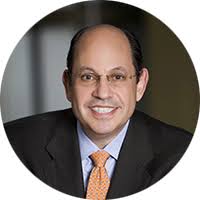
Fixed-income liquidity isn’t what it used to be, and market participants must continue to adjust to achieve trading efficiency in what is expected to be a challenging landscape for the foreseeable future.
That was the gist of bond-market practitioners and researchers who spoke today at the inaugural meeting of the U.S. Securities and Exchange Commission’s Fixed Income Market Structure Advisory Committee.
Fixed-income markets have shifted “from a high-liquidity equilibrium to a low-liquidity equilibrium,” said Jeff Meli, co-head of research at Barclays. Rather than waiting for market structure to sort itself out and liquidity to improve, traders have instead changed their behavior.
Data showing tighter aggregate bid-ask spreads underscore these behavioral changes, rather than indicating a more liquid market. For example, Meli said market participants are increasingly trading newer, more liquid bonds to avoid having to deal with older, less liquid bonds; people are also trading more using an agency model, where the two sides are lined up in advance, and less using the more-risky principal model.
“Liquidity has declined enough to affect material changes in how investors behave,” Meli said. “This behavior can be a guide towards understanding how markets have shifted.”
Trading executives from large institutional investment firms weighed in on the most important considerations toward improving market liquidity.

Richie Prager, BlackRock
Richie Prager, head of trading for the liquidity and investments platform at BlackRock, suggested that buy-side firms need to become more self-sufficient regarding their own trading operations, as “liquidity is not a god-given right.”
The trading landscape has evolved from a principal model to a hybrid principal-agency model. “Banks can’t do everything for us, nor should they,” he said. Electronic trading platforms and other alternative liquidity providers can help to the extent that they aggregate liquidity, but block trading remains a significant challenge, Prager said.
BlackRock takes a multi-faceted approach to interface with the market, with flexibility around deploying different protocols, products, and innovation. Prager summed it up as “technology, tactics and TCA,” or transaction cost analysis.
Jim Switzer, global head of trading at AllianceBernstein, said market participants need to solve for efficiency first and liquidity after that. Electronic trading can boost efficiency and speed up execution, which is especially important in volatile markets.

Jim Switzer, AB
Regarding the buy side stepping in to address the liquidity vacuum left by the sell side, Switzer indicated some expectations are overblown. “If you’re relying on the buy side to fill those shoes, I don’t think that’s going to happen.”
Investment managers will never be true market makers, as their liquidity providing is limited to times “when it’s convenient for us,” he said.
One important consideration that gets overlooked in corporate-bond liquidity research and data is that of the trades that don’t get executed, either because they don’t find the “other side” out in the market, or they don’t even make it to the trading desk because of illiquidity concerns. This point was brought up by Kevin McPartland, head of market structure and technology research at Greenwich Associates, and amplified by Vanguard Global Head of Credit Paul Jakubowski.
“How can we stimulate trades that weren’t executed so that they get done?” Jakubowski asked. “How do we find those trades that didn’t find a level or where they didn’t know a level. To really improve liquidity we should focus on having a larger percentage of those trades get done.”
Jakubowski estimates 20 to 30 trading-system operators come through Vanguard’s offices each year to present. He said electronic platforms can help institutional traders, but operators should focus more on improving market structure and benefiting liquidity providers and consumers, and less on technological bells and whistles.
Mission
The FIMSAC is focusing on liquidity in corporate and municipal bonds, at least for now. SEC Commissioner Kara Stein noted that the value of corporate bonds increased from $5.9 trillion in 2010 to $8.1 trillion in 2016, as more trading moved from voice to electronic, new liquidity providers emerged as big banks reduced their influence, and liquidity increasingly concentrated among the bigger bond issues.
In introductory remarks, SEC Chair Jay Clayton said “it is difficult to overstate the significance of fixed income markets,” noting their impact on other securities markets as well as the broader economy.
Clayton asked the FIMSAC committee members to frame their remarks and questions in terms of what policy would mean for ‘mom and pop’ investors who hold fixed-income securities in their 401(k) or pension plans. “The long-term interest of the retail investor is what we are all about,” he said.






